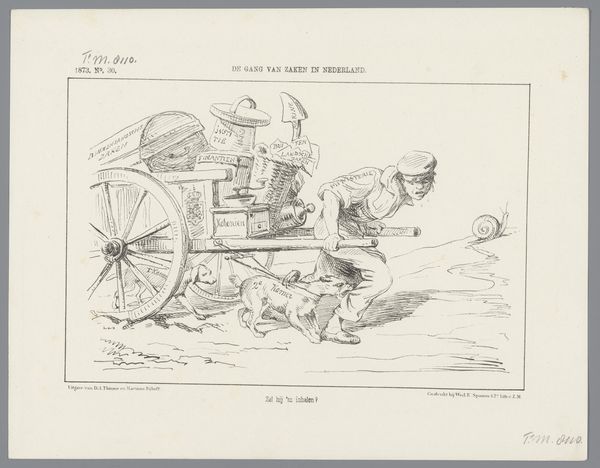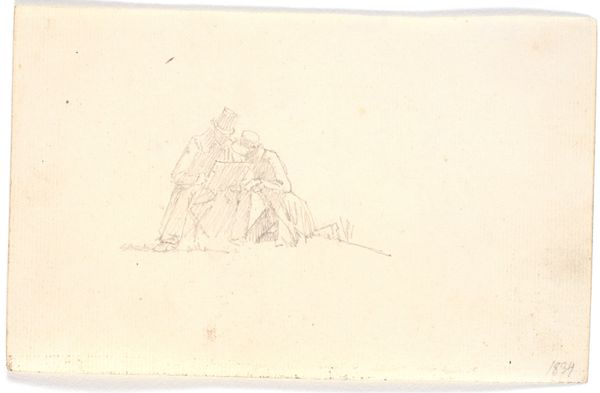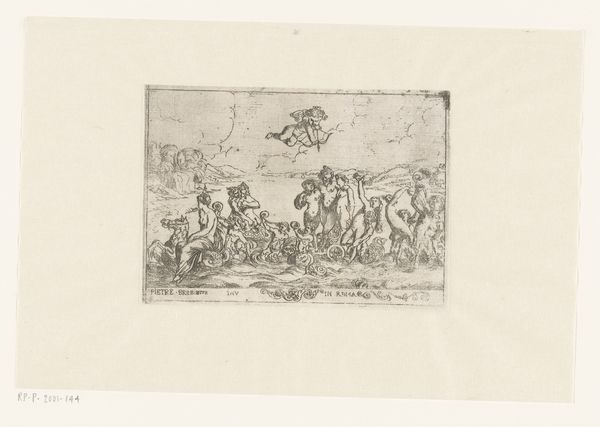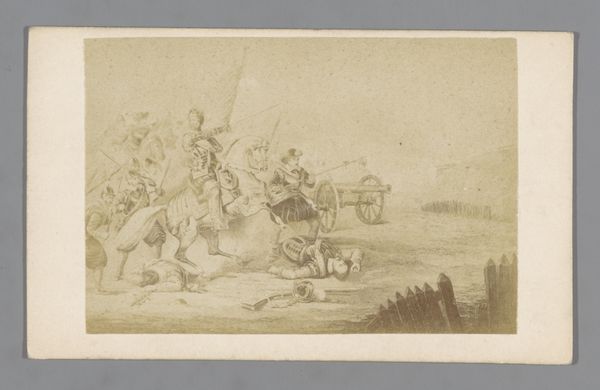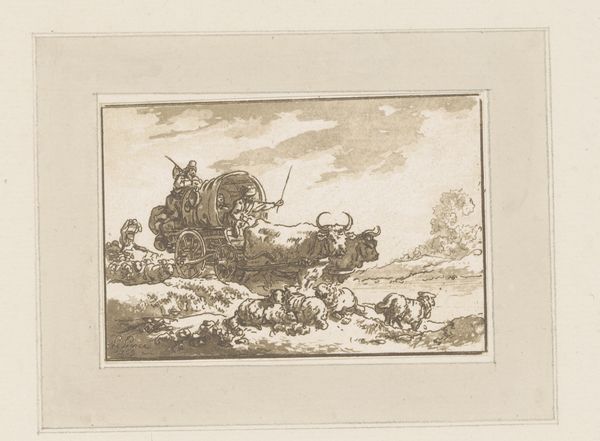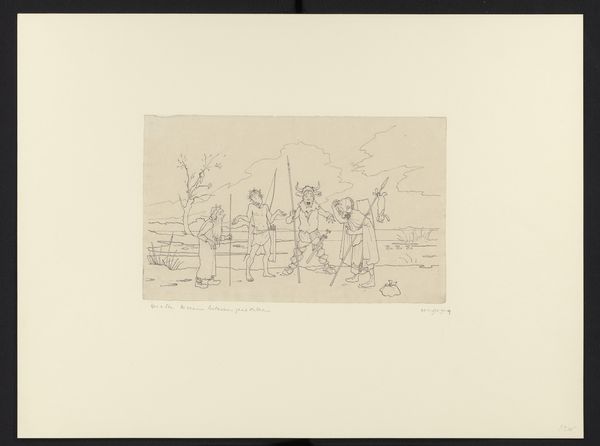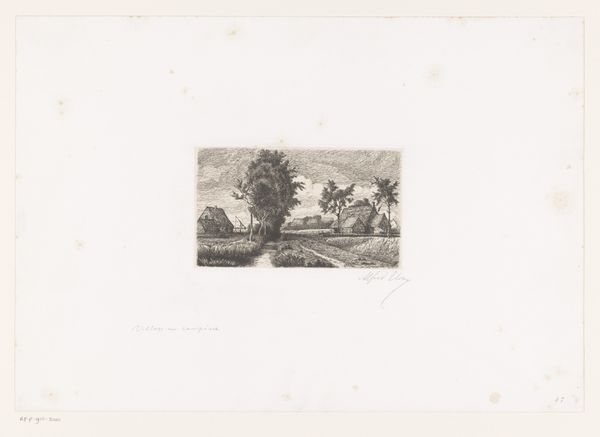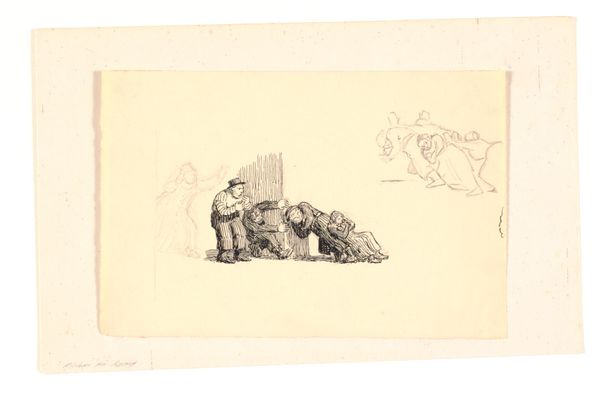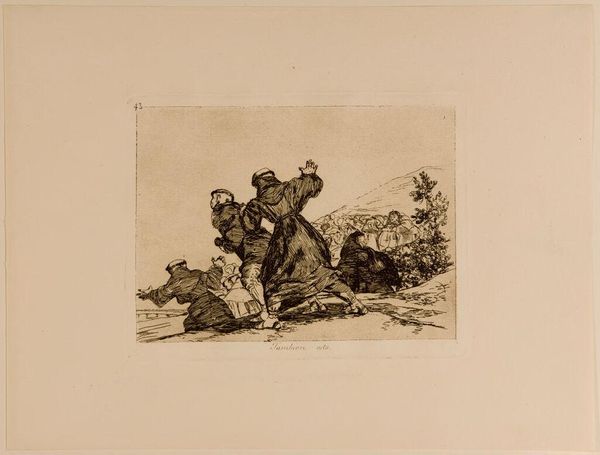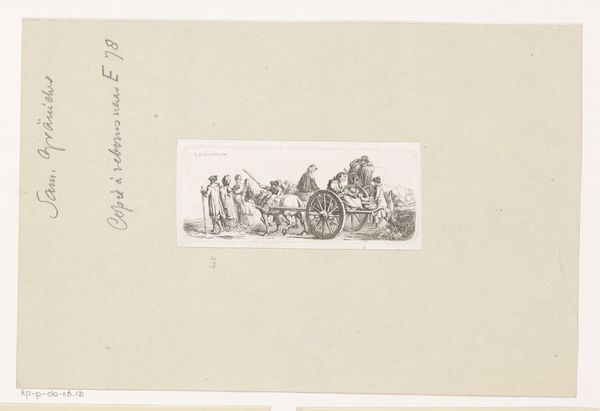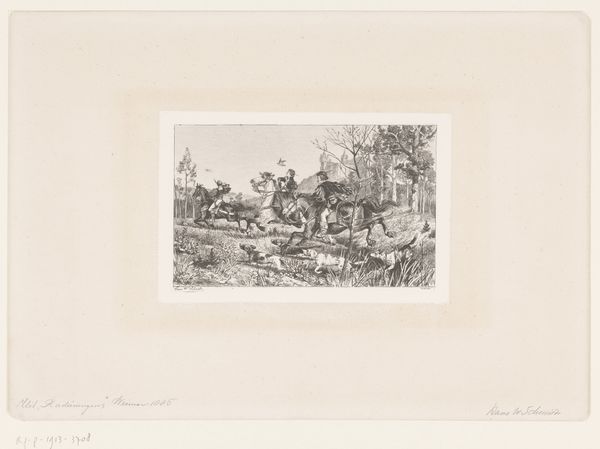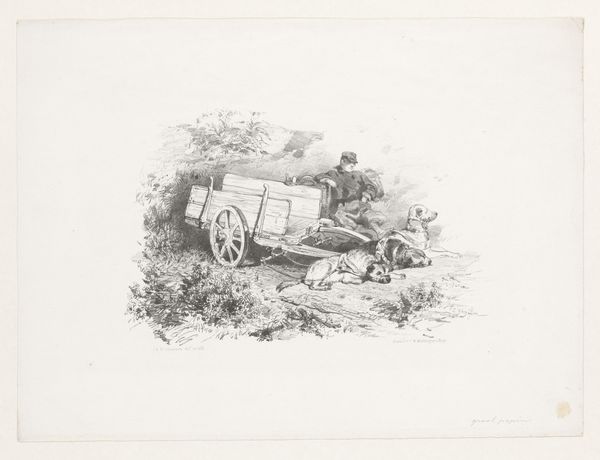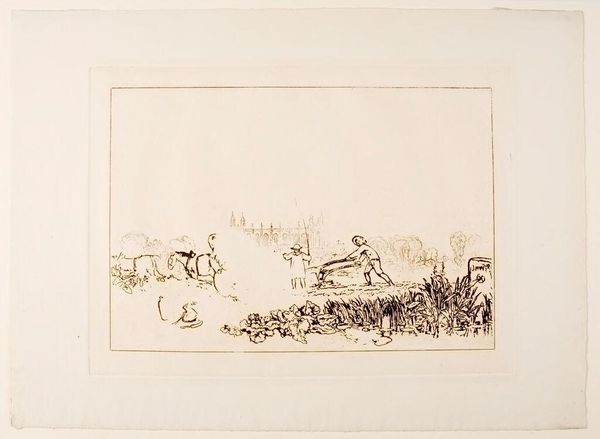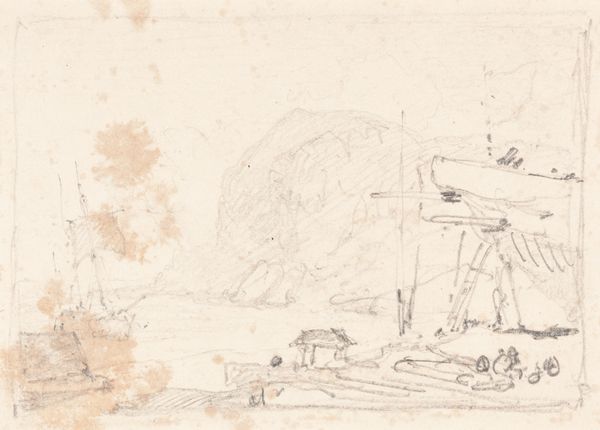
Putti bij symbolen met betrekking tot de VOC, kamer van Amsterdam en de Franse haan 1752 - 1819
0:00
0:00
jurriaanandriessen
Rijksmuseum
drawing, pencil
#
drawing
#
allegory
#
figuration
#
pencil
#
line
#
history-painting
Dimensions: height 65 mm, width 101 mm
Copyright: Rijks Museum: Open Domain
Editor: This drawing from between 1752 and 1819, titled "Putti bij symbolen met betrekking tot de VOC, kamer van Amsterdam en de Franse haan," attributed to Jurriaan Andriessen, uses delicate lines to depict an allegorical scene. There's a playful quality to it, yet it feels imbued with a specific, perhaps historical, message I’m not quite grasping. What's your take? What story is being told here? Curator: This piece invites us to unpack the visual language of power and commerce during a pivotal era. Notice how the putti, or cherubic figures, are interacting with symbols representing the Dutch East India Company (VOC), Amsterdam, and France. The French Rooster, of course, speaks to France itself, and how those figures interact is indicative of relationships. Consider the political context of the time; the drawing likely reflects shifting alliances and colonial ambitions. How might the artist be commenting on Dutch identity through these visual allegories? Editor: So, it’s not just a charming scene, but a commentary on power dynamics? The VOC, with its colonial reach, alongside the French Rooster… It paints a complex picture. Curator: Exactly. And who is represented by these “putti”? This is not just a historical artifact, but a crucial insight into the rhetoric and strategies of a society grappling with globalization, colonial power and evolving national identities. Do you think the artist may have been in support or in opposition of colonialism based on this imagery? Editor: It makes you wonder whose perspectives were being excluded or amplified through such depictions. Thank you, it helps so much to look at this from a wider societal lens! Curator: Indeed. It's through this intersectional lens that we can start understanding art not as isolated objects, but as vital nodes within larger networks of meaning and power.
Comments
No comments
Be the first to comment and join the conversation on the ultimate creative platform.
